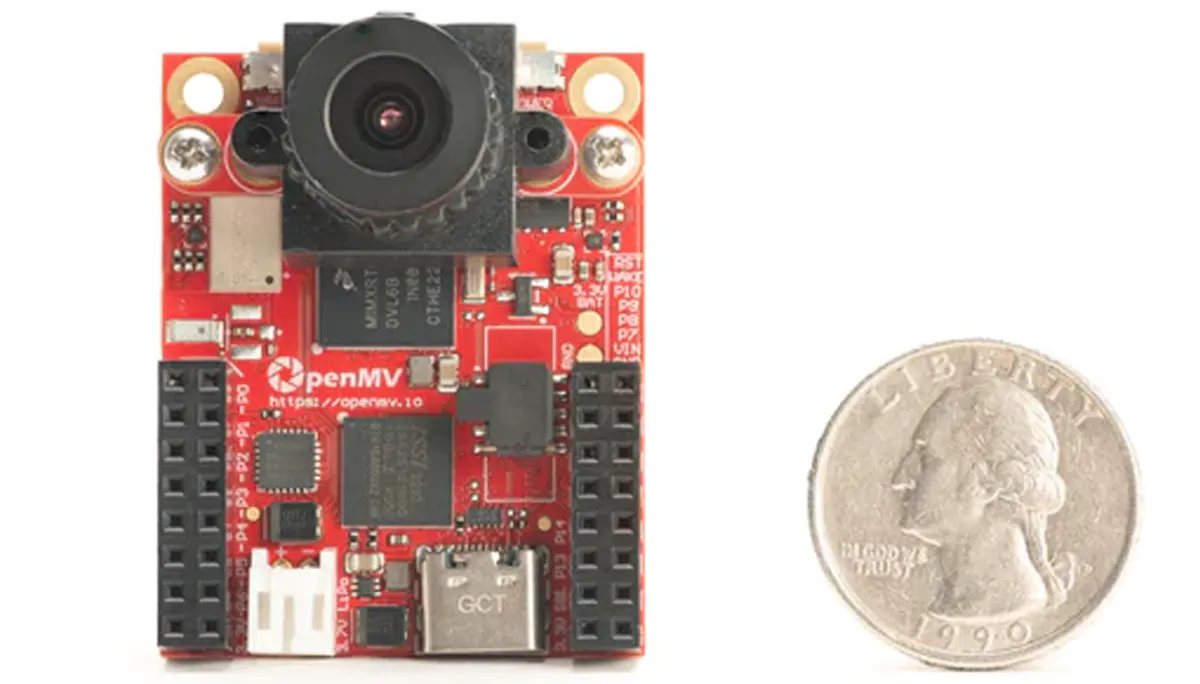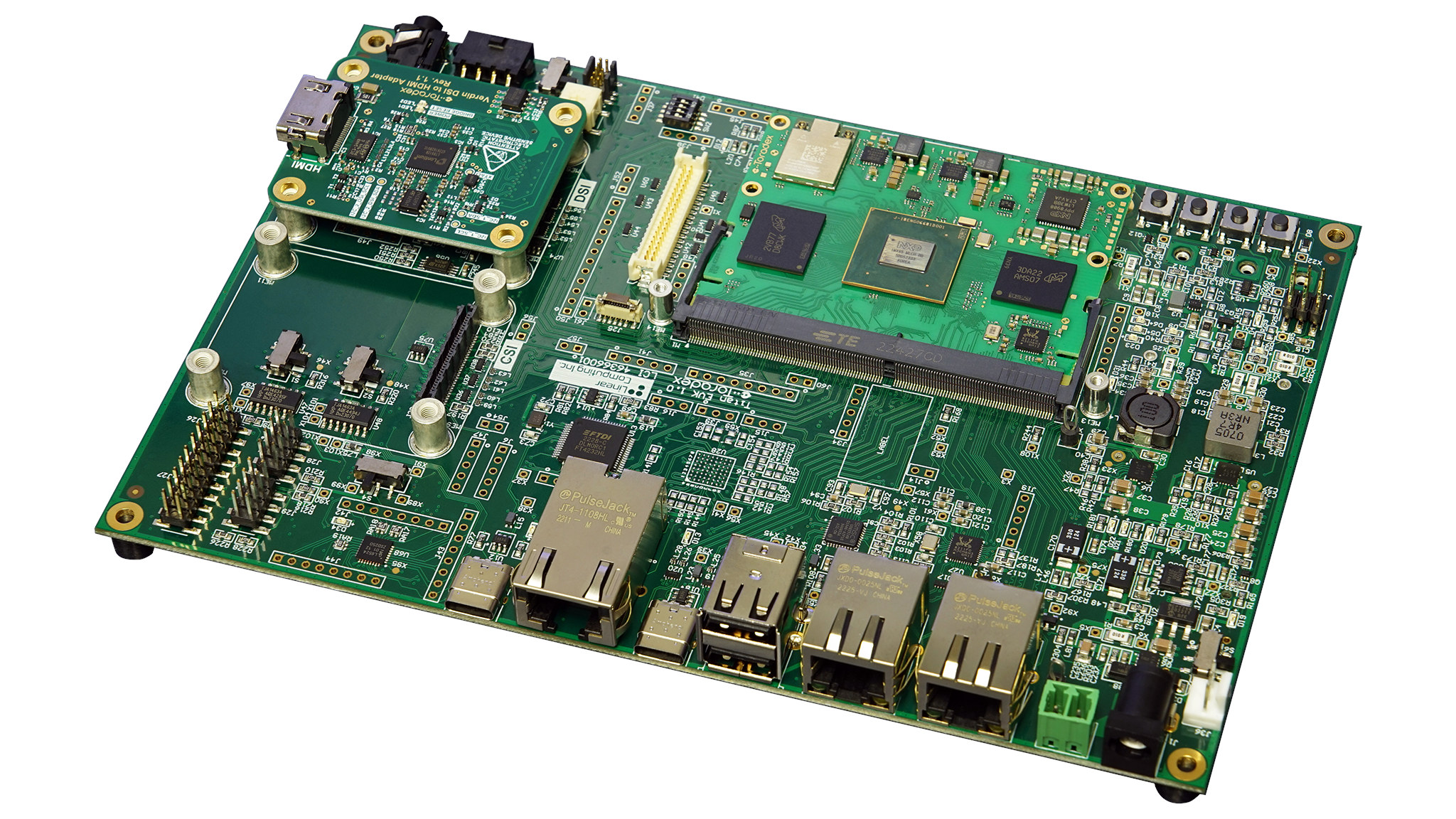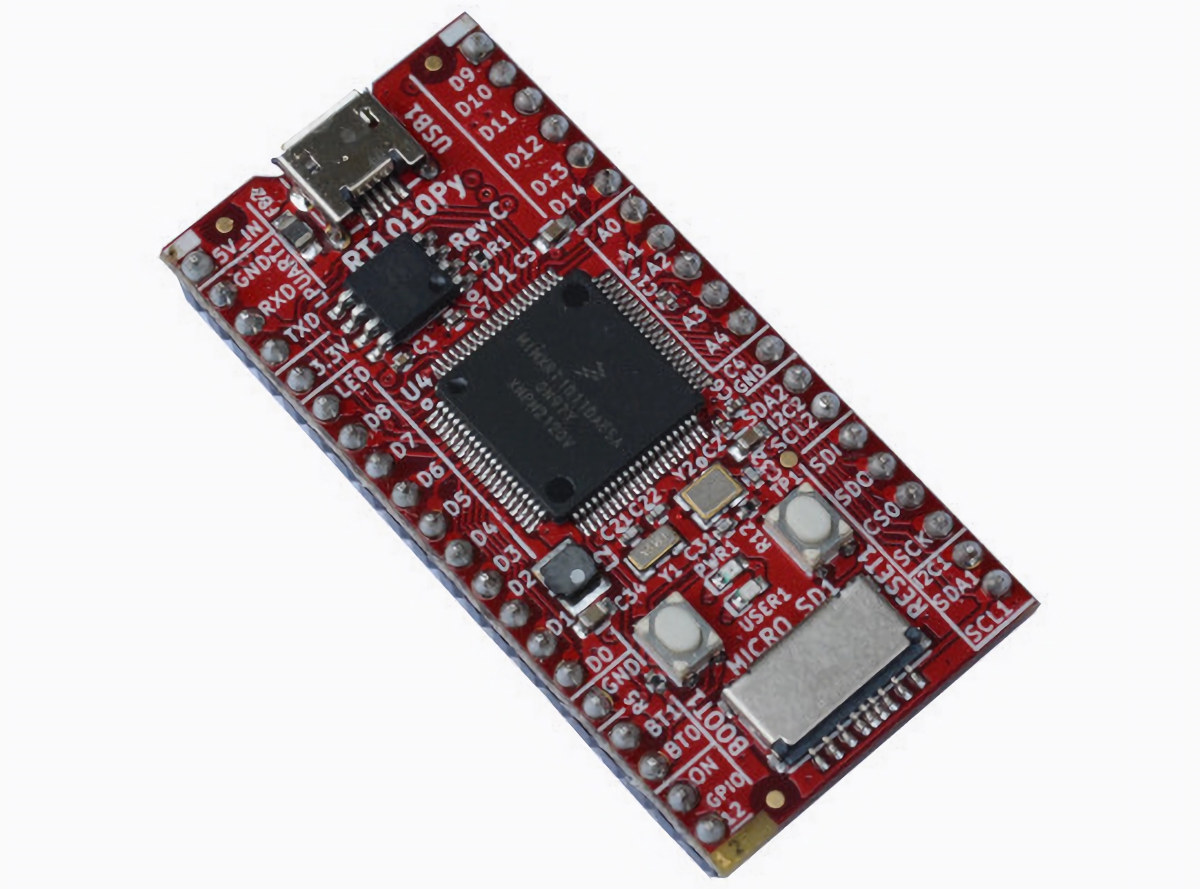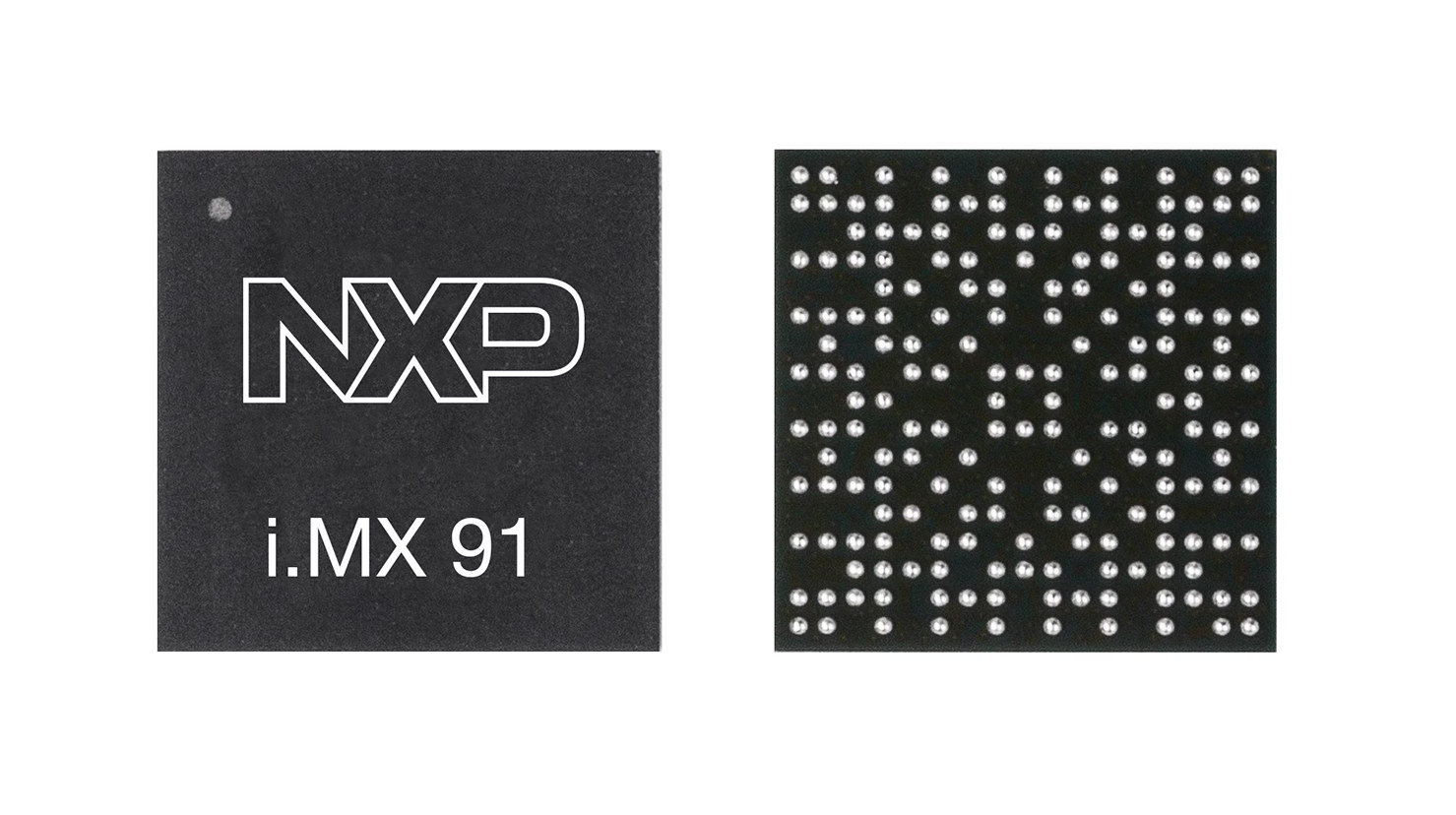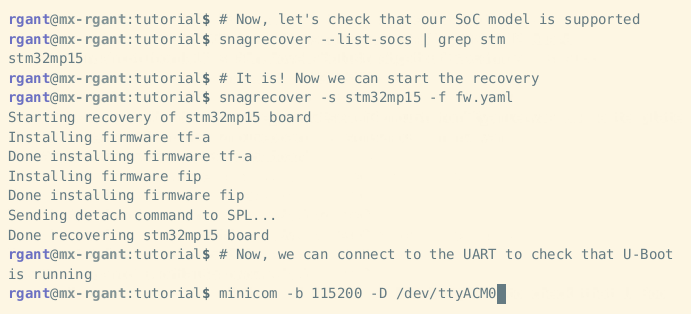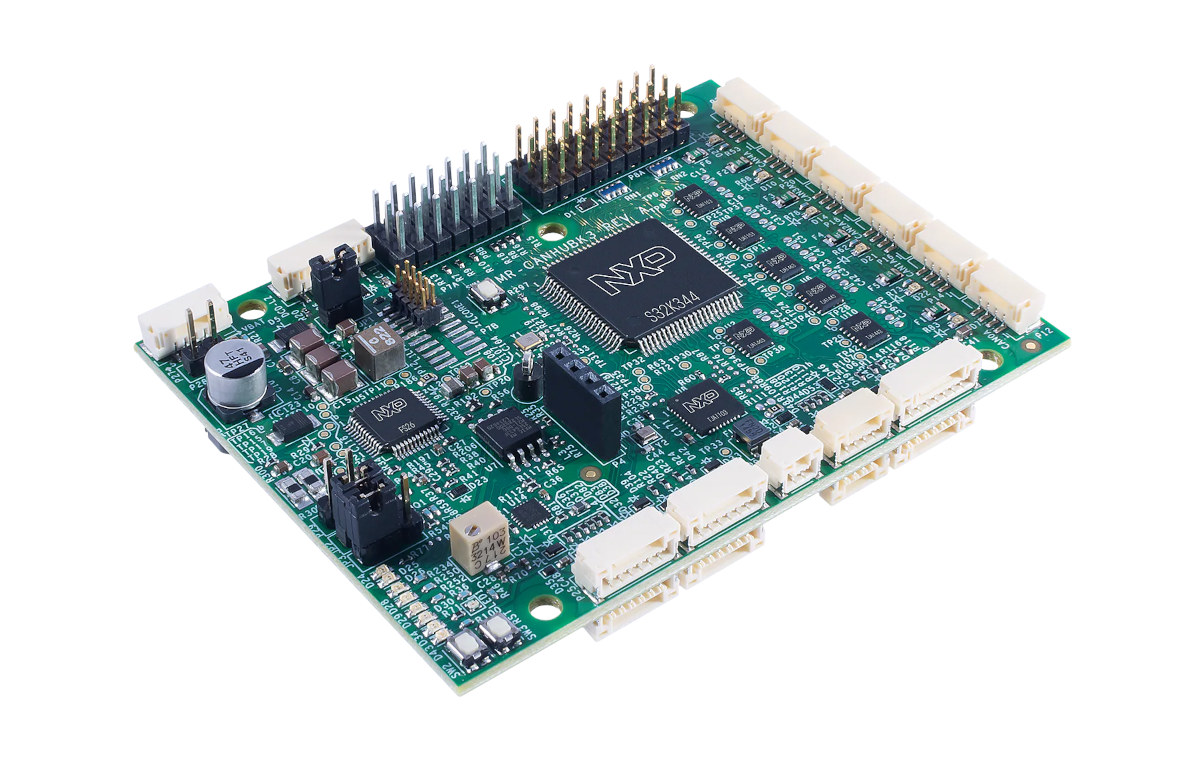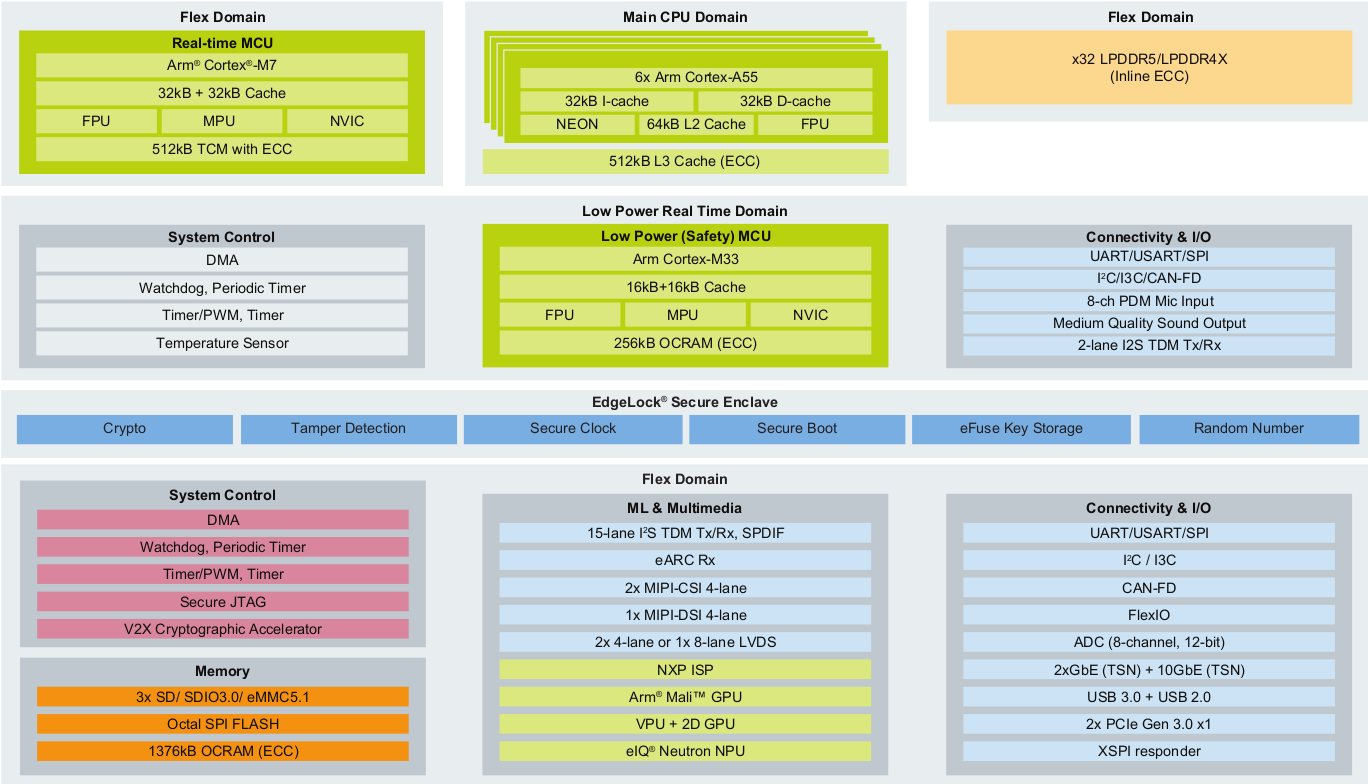Following the success of the OpenMV Cam H7 and the original OpenMV VGA Camera, OpenMV recently launched the OpenMV CAM RT1062 powered by NXP’s RT1060 processor. This new camera module integrates a range of features, including a high-speed USB-C (480Mbps) interface, an accelerometer, and a LiPo connector for portability. Similar to its predecessor, this camera module also features a removable camera system, and it is built around the OV5640 image sensor which is more powerful in terms of resolution and versatility. However, the previous Omnivision OV7725 sensor, used in the OpenMV Cam H7 has a far superior frame rate and low-light performance. OpenMV provides a Generic Python Interface Library for USB and WiFi Comms and an Arduino Interface Library for I2C, SPI, CAN, and UART Comms which can be used to interface your OpenMV Cam to other systems. To program the board, you can use MicroPython 3 with OpenMV IDE, […]
Toradex Titan Evaluation Kit features NXP i.MX 95 AI processor for IoT, industrial, and automotive applications
[Update September 12, 2024: The NXP i.MX 95 Titan Evaluation Kit (EVK) has been renamed to the “i.MX 95 Verdin Evaluation Kit”] Toradex Titan Evaluation Kit features the NXP i.MX 95 Cortex-A55/M33/M7 heterogenous AI processor introduced at the beginning of the year with an NXP eIQ Neutron Neural Network Accelerator (NPU) for automotive, industrial, and IoT applications. The design is comprised of a carrier board and a SO-DIMM system-on-module with the NXP i.MX 95 SoC, up to 16GB LPPDR5 memory, up to 128GB eMMC flash storage, a WiFi 5 and Bluetooth 5.0 wireless module, a gigabit Ethernet controller, a PMIC, and a few other components. The carrier board also comes with 10GbE and Gigabit Ethernet ports, HDMI video output, a few USB ports, and various expansion connectors and headers. Toradex Titan evaluation kit specifications: SoC – NXP i.MX 95 with Up to 6x Arm Cortex-A55 application cores clocked at 2.0 […]
$15 Olimex RT1010-Py board runs MicroPython on 500 MHz NXP i.MX RT1011 Cortex-M7 MCU
Olimex RT1010-Py is a small development board powered by a 500 MHz NXP i.MX RT1011 Cortex-M7 MCU designed to run MicroPython and about four times faster than the Raspberry Pi Pico. The board comes with two 20-pin GPIO headers exposing various interfaces such as SPI and I2C, a microSD card slot for storage, two buttons, and a USB-C Type port for power and programming. The RT1010-Py also includes a 12-pin fUEXT connector to connect Olimex’s UEXT modules via a flat cable. Olimex RT1010-Py specifications: SoC – NXP iMX RT1011 crossover microcontroller with an Arm Cortex-M7 clocked at 500 MHz and 128KB SRAM/TCM Storage – 2MB SPI Flash, microSD card slot USB – 1x USB 2.0 OTG Type-C port Expansion 2x 20-pin headers with up to 15x GPIO, 3x UART, 2x SPI, 2x I2C, 1x I2S, 4x PWM. 5x analog input fUEXT connector (12-pin flat cable 0.5 mm step connector) with […]
SECO Modular Vision HMI displays support Arm and x86 SMARC 2.1 modules
SECO has unveiled a new HMI family of smart displays called the “Modular Vision” with NXP i.MX 93 (Arm), NXP i.MX 8M (Arm), or Intel Elkhart Lake (x86) powered SMARC 2.1-compliant system-on-modules and a display size ranging from 7-inch up to 15.6-inch. The goal is to offer a flexible platform to customers who can select various display sizes (7-inch, 10.1-inch, or 15.6-inch currently) and a SMARC module that closely matches the product’s requirements for example for a standalone panel PC. SECO Modular Vision key features and specifications: SoC 7-inch model – NXP i.MX93 single or dual-core Arm Cortex-A55 @ 1.7 GHz, Arm Cortex-M33 @ 250MHz, Arm Ethos U-65 microNPU 10.1-inch model – NXP i.MX 8M Plus dual or quad-core Arm Cortex-A53 @ 1.8 GHz, Arm Cortex-M7 @ 800MHz, optional GPU/VPU/2.3 TOPS NPU 15.6-inch model – Intel Atom x6000E, Pentium, and Celeron N and J Series “Elkhart Lake” CPUs with Intel […]
NXP i.MX 91 single-core Cortex-A55 SoC to power Linux-based cost-optimized edge devices
NXP has just unveiled the NXP i.MX 91 single-core Cortex-A55 processor following the introduction of the i.MX 93 in 2021, and designed for cost-optimized edge devices running Linux. The NXP i.MX 93 processor comes with up to two Cortex-A55 cores, a Cortex-M33 real-time core, and an Ethos U65 microNPU, but targeting entry-level Linux systems, the NXP i.MX 91 processor does without the real-time core and the AI acceleration, while still integrating NXP EdgeLock Secure Enclave, and the company highlights support for multiple wireless connectivity options through companion chips such as the IW612 that supports Wi-Fi 6, Bluetooth 5.2, 802.15.4, and the new Matter protocol. NXP i.MX 91 specifications: CPU – Arm Cortex-A55 running at up to 1.4GHz with 256KB L2 cache System Memory – Up to 2.4GT/s x16 LPDDR4 with Inline ECC Storage 3x SD 3.0, SDIO 3.0, eMMC 5.1 1x Octal SPI including support for SPI NOR and SPI […]
Snagboot is an open-source cross-vendor recovery tool for embedded targets
Bootlin has just released the Snagboot open-source recovery tool for embedded platforms designed to work with multiple vendors, and currently STMicro STM32MP1, Microchip SAMA5, NXP i.MX6/7/8, Texas Instruments AM335x and AM62x, and Allwinner “sunxi” processors are supported. Silicon vendors usually provide firmware flashing tools, some closed-source binaries, that only work with their hardware. So if you work on STM32MP1 you’d use STM32CubeProgrammer, while SAM-BA is the tool for Microchip processors, NXP i.MX SoC relies on UUU, and if you’ve ever worked on Allwinner processors you’re probably family with sunxi-fel. Bootlin aims to replace all those with the Snagboot recovery tool. The Python tool is comprised of two parts: snagrecover using vendor-specific ROM code mechanisms to initialize external RAM and run the bootloader (typically U-Boot) without modifying any non-volatile memories. snagflash communicates with the bootloader over USB to flash system images to non-volatile memories, using either DFU, USB Mass Storage, or […]
NXP S32K344 evaluation board for mobile robots offers one 100BaseT1, six CAN-FD interfaces
MR-CANHUBK344 is an evaluation board based on NXP S32K344 Arm Cortex-M7 automotive general-purpose microcontroller designed for mobile robotics applications such as autonomous mobile robots (AMR) and automated guided vehicles (AGV) with a 100baseT1 Ethernet interface and six CAN-FD ports. The six CAN bus connectors come in three pairs of CAN-FD, CAN-SIC (signal improvement), and CAN-SCP (secure) interfaces using NXP chips. The board can notably be used for tunneling CAN over Ethernet using IEEE1722, plus the board is equipped with an SE050 Secure element with NFC for authentication, and various general-purpose peripheral interfaces via DroneCode standard JST-GH connectors. MR-CANHUBK344 evaluation board specifications: MCU – NXP S32K344 lockstep Cortex-M7 microcontroller @ up to 160 MHz with 4MB flash, 512KB SRAM, 6x CAN bus interfaces, up to 218 I/Os, AEC-Q100 compliant Ethernet – ASIL-B compliant 100BASE-T1 Ethernet PHY (TJA1103) 6x CAN-FD interfaces with 2x CAN Bus with flexible data rate through TJA144x automotive […]
NXP i.MX 95 processor features Cortex-A55, Cortex-M33, and Cortex-M7 cores, eIQ Neutron NPU
NXP i.MX 95 is an upcoming Arm processor family for automotive, industrial, and IoT applications with up to six Cortex-A55 application cores, a Cortex-M33 safety core, a Cortex-M7 real-time core, and NXP eIQ Neutron Neural Network Accelerator (NPU). We’re just only starting to see NXP i.MX 93 modules from companies like iWave Systems and Forlinx, but NXP is already working on its second i.MX 9 processor family with the i.MX 95 application processor family equipped with a higher number of Cortex-A55 cores, an Arm Mali 3D GPU, NXP SafeAssure functional safety, 10GbE, support for TSN, and the company’s eIQ Neutron Neural Processing Unit (NPU) to enable machine learning applications. NXP i.MX 95 specifications: CPU Up to 6x Arm Cortex-A55 cores with 32KB I-cache, 32KB D-cache, 64KB L2 cache, 512KB L3 cache with ECC 1x Arm Corex-M7 real-time core with 32KB I-cache, 32KB D-cache, 512KB TCM with ECC 1x Arm Cortex-M33 […]


